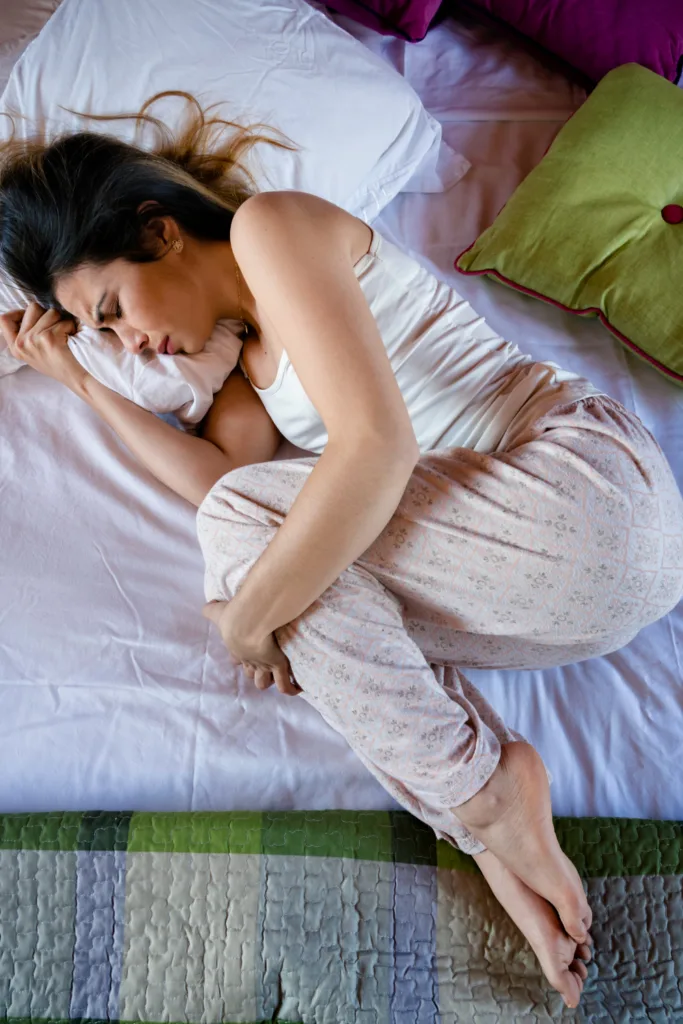
If you’re a woman, you’re probably familiar with the term PMS, which stands for premenstrual syndrome.
PMS is a common condition that affects many women in the days leading up to their period. Symptoms can include bloating, cramping, mood swings, and fatigue.
However, there’s another condition that’s less well-known but can be much more severe: PMDD, or premenstrual dysphoric disorder.
PMDD is a more severe form of PMS that affects around 5% of women.
While PMS can cause discomfort and mild mood swings, PMDD can be debilitating and interfere with daily life.
Symptoms can include severe depression, anxiety, irritability, and even suicidal thoughts.
Unlike PMS, PMDD is a psychiatric disorder and requires treatment from a mental health professional.
Disclosure: Bear in mind that some of the links in this post are affiliate links and if you click on them to make a purchase I will earn a commission. Keep in mind that I link these companies and their products because of their quality and not because of the commission I receive from your purchases. The decision is yours, and whether or not you decide to buy something is completely up to you.
Understanding PMS
If you’re a woman, you’ve probably heard of PMS, or premenstrual syndrome.
PMS is a group of physical and emotional symptoms that many women experience in the days leading up to their menstrual period.
In this section, we’ll take a closer look at PMS and its symptoms.
Physical Symptoms
PMS can cause a wide range of physical symptoms, including bloating, breast tenderness, headache, and fatigue.
You may also experience food cravings, trouble sleeping, and pain in your lower back or abdomen.
These symptoms are caused by changes in your hormone levels, particularly estrogen.
Emotional Symptoms
In addition to physical symptoms, PMS can also cause emotional symptoms.
You may feel irritable, out of control, or moody.
You may also experience feelings of sadness or anxiety.
These emotional symptoms are often related to changes in your brain chemistry.
Severity
The severity of PMS symptoms can vary widely from woman to woman.
Some women may experience mild symptoms that are easily managed with lifestyle changes, while others may experience severe symptoms that interfere with their daily lives.
If your PMS symptoms are severe, you may have a condition called premenstrual dysphoric disorder (PMDD), which is a more severe form of PMS.
In general, PMS symptoms tend to improve with exercise, diet, and other lifestyle changes.
However, if your symptoms are severe or affecting your daily life, you should talk to your healthcare provider about treatment options.
There are a variety of medications and other treatments that can help manage PMS symptoms.
Overall, PMS is a common condition that affects many women.
By understanding the physical and emotional symptoms of PMS, you can take steps to manage your symptoms and improve your quality of life.

Related Articles: 15 Ways To Regain Confidence Back After Having A Baby
10 Ways To Rekindle The Romance Back Into Your Marriage
What Are Hormonal Imbalance Symptoms?
Understanding PMDD
Premenstrual dysphoric disorder (PMDD) is a severe form of premenstrual syndrome (PMS) that affects some women during their menstrual cycle.
PMDD can cause physical and emotional symptoms that can interfere with daily activities and relationships.
In this section, we will discuss the physical and emotional symptoms of PMDD, its severity, and the key differences between PMS and PMDD.
Physical Symptoms
PMDD can cause a range of physical symptoms, including cramps, headaches, swelling, and diarrhea.
Women with PMDD may also experience changes in appetite, such as overeating or not feeling hungry at all.
Emotional Symptoms
The emotional symptoms of PMDD can be severe and include feelings of hopelessness, despair, and feeling overwhelmed or out of control.
Women with PMDD may also experience mood changes, such as anger, irritability, and crying spells.
They may also have trouble concentrating and feel fatigued or lack energy.
Severity
PMDD is more severe than PMS, and the symptoms can significantly impact a woman’s daily life.
In some cases, PMDD can lead to suicidal thoughts or behaviors, making it a critical health condition that requires immediate attention.
Differences
The key differences between PMS and PMDD lie in the severity of symptoms and estrogen levels.
Women with PMDD have lower levels of estrogen and higher levels of progesterone during the luteal phase of their menstrual cycle.
Genetic factors may also play a role in the development of PMDD.
Treatment Options
If you are experiencing symptoms of PMDD, it is essential to speak with your gynecologist or healthcare provider.
Treatment options may include lifestyle changes, such as exercise and stress reduction techniques, and medication, such as selective serotonin reuptake inhibitors (SSRIs) and birth control pills containing drospirenone.
In conclusion, PMDD is a severe form of PMS that can cause physical and emotional symptoms that interfere with daily activities and relationships.
If you are experiencing symptoms of PMDD, it is essential to speak with your healthcare provider to discuss treatment options.

Diagnosis and Treatment
Diagnosis
To diagnose PMS or PMDD, your healthcare provider will ask you about your symptoms and medical history.
They may also perform a physical exam and run some tests to rule out other conditions that can cause similar symptoms.
The criteria for diagnosing PMDD are more specific than those for PMS.
To be diagnosed with PMDD, you must meet the following criteria:
- Symptoms occur in the week before your period and improve within a few days of the start of your period
- At least one of the following emotional symptoms is present: feeling sad, hopeless, or self-deprecating; feeling anxious, tense, or on edge; feeling irritable, angry, or easily annoyed
- At least one of the following behavioral symptoms is present: decreased interest in usual activities; difficulty concentrating; lethargy or fatigue; changes in appetite; sleep disturbances
- These symptoms must be severe enough to interfere with your daily life
Treatment Options
Treatment for PMS and PMDD depends on the severity of your symptoms and how much they interfere with your daily life.
Here are some treatment options that may help:
- Lifestyle changes: Regular exercise, a healthy diet, and stress management techniques like yoga or meditation may help reduce symptoms.
- Medications: Over-the-counter pain relievers like ibuprofen or naproxen can help relieve physical symptoms like cramps and headaches. Antidepressants like selective serotonin reuptake inhibitors (SSRIs) can also help relieve emotional symptoms.
- Hormonal therapy: Birth control pills, patches, or rings can help regulate your hormones and reduce symptoms. Gonadotropin-releasing hormone (GnRH) agonists can also help regulate your menstrual cycle and reduce symptoms, but they are usually only used for severe cases.
- Alternative therapies: Some women find relief from PMS and PMDD symptoms with alternative therapies like acupuncture, herbal supplements, or homeopathy.
It’s important to work with your healthcare provider to find the right treatment plan for you.
Keep track of your symptoms and how they respond to different treatments, and don’t be afraid to ask questions or voice concerns.
With the right treatment, you can manage your symptoms and improve your quality of life.
Related Articles: The Importance Of Self-care For Moms
Dealing With The Physical And Mental Challenges Of Surrogacy
The 5 Stages Of Grief During Divorce
Final Thoughts
PMS and PMDD are two conditions that affect many women worldwide.
While they share some common symptoms, PMDD is generally more severe and can significantly impact a woman’s quality of life.
Understanding the differences between PMS and PMDD is crucial in managing and treating these conditions effectively.
If you experience symptoms of PMS or PMDD, it is essential to seek medical attention.
Your doctor can help you determine which condition you have and develop a treatment plan that works for you.
This may include lifestyle changes, such as exercise and a healthy diet, as well as medication to manage symptoms.
It is also important to note that while there is no cure for PMS or PMDD, there are many treatment options available that can help manage symptoms and improve your quality of life.
With the right treatment plan and support, you can manage your symptoms and live a happy, healthy life.
Remember to track your symptoms and talk to your doctor about any changes or concerns you may have.
With the right care and support, you can manage your symptoms and live a fulfilling life.
Works Cited
Premenstrual dysphoric disorder: Different from PMS? – Mayo Clinic
PMS vs. PMDD: How Are They Different? (psycom.net)
Premenstrual Dysphoric Disorder (PMDD) | Johns Hopkins Medicine

